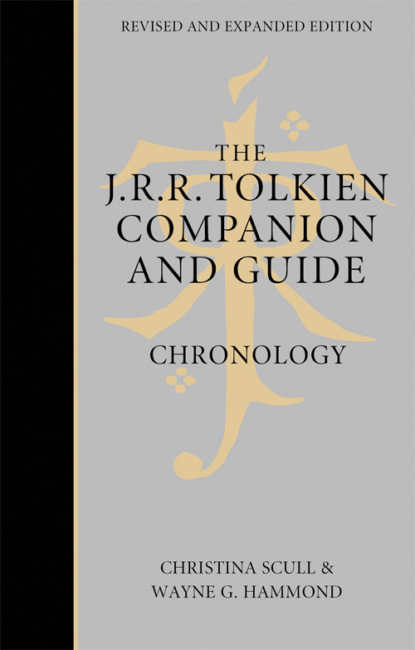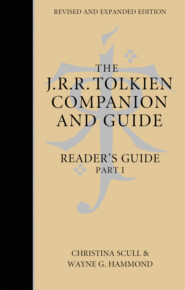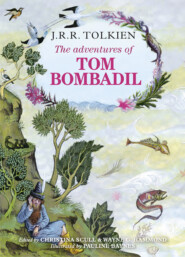По всем вопросам обращайтесь на: info@litportal.ru
(©) 2003-2024.
✖
The J. R. R. Tolkien Companion and Guide: Volume 1: Chronology
Настройки чтения
Размер шрифта
Высота строк
Поля
1953 (#litres_trial_promo)
1954 (#litres_trial_promo)
1955 (#litres_trial_promo)
1956 (#litres_trial_promo)
1957 (#litres_trial_promo)
1958 (#litres_trial_promo)
1959 (#litres_trial_promo)
1960 (#litres_trial_promo)
1961 (#litres_trial_promo)
1962 (#litres_trial_promo)
1963 (#litres_trial_promo)
1964 (#litres_trial_promo)
1965 (#litres_trial_promo)
1966 (#litres_trial_promo)
1967 (#litres_trial_promo)
1968 (#litres_trial_promo)
1969 (#litres_trial_promo)
1970 (#litres_trial_promo)
1971 (#litres_trial_promo)
1972 (#litres_trial_promo)
1973 (#litres_trial_promo)
NOTES (#litres_trial_promo)
INDEX (#litres_trial_promo)
II
PREFACE
LIST OF ARTICLES
READER’S GUIDE A–M
III
READER’S GUIDE N–Z
FAMILY TREES
BIBLIOGRAPHIES
Published Writings & Art
Poetry & Translations
WORKS CONSULTED
INDEX
ABOUT THE AUTHORS (#litres_trial_promo)
OTHER BOOKS BY (#litres_trial_promo)
ABOUT THE PUBLISHER (#litres_trial_promo)
Preface (#ulink_ae66a93b-ae39-5480-9ee2-2681d5724d1d)
THIS BOOK has been designed, in both its original edition (2006) and the present revised and expanded edition, to serve as a reference of (at least) first resort for the study and appreciation of the works of J.R.R. Tolkien. It is meant to be a companion to his readers, and a basic guide to his writings and ideas, his life and times, his family, friends, and colleagues, and the places he knew and loved. It is not, despite a similarity of titles, a handbook of his invented lands and characters in the manner of Robert Foster’s Complete Guide to Middle-earth or J.E.A. Tyler’s Complete Tolkien Companion. Nor is it a substitute for standard works such as Humphrey Carpenter’s J.R.R. Tolkien: A Biography and Christopher Tolkien’s History of Middle-earth, or for the vast body of critical literature about Tolkien. Although it often will be found useful by itself, in particular where it presents new research and scholarship, its purpose is equally to point to other resources in which a subject is more fully considered or differing points of view are expressed.
The length of this work may surprise readers who, familiar with The Hobbit and The Lord of the Rings, have been less aware of Tolkien’s other writings, or who, perhaps misled by the biographies of our subject that have followed Carpenter (and are largely derived from his book), have thought that Tolkien lived in a simple circumscribed world in which little happened beyond his writing, his teaching, his immediate family, and the Inklings. In fact his life was remarkably full, his circle of friends was wide and varied, and his tales of Bilbo and Frodo Baggins exist alongside other works of fiction and poetry, not least the ‘Silmarillion’ mythology, and next to significant contributions to Old and Middle English studies. In consequence, there is so much to say about Tolkien that we have had to divide our book into parts, two volumes in the original edition, and now three.
The first volume is an extensive Chronology of Tolkien’s life and works. This has allowed us reasonably to assemble – as a biographical essay would not have done, demanding more selection and brevity – many of the miscellaneous details about Tolkien we have gathered in the course of research, details which individually may be of little moment, but in relation to one another can be illuminating. Altogether these form a picture of a extraordinarily busy man: Tolkien the scholar, Tolkien the teacher and administrator, Tolkien the husband and father, Tolkien the creator of Middle-earth. His critics have not always appreciated how busy he truly was – those who claim that he should have published more in his academic fields had he not wasted his time writing fantasy, or those who fault him for not completing The Silmarillion as if he had nothing else to do even in his retirement. One of our aims in this book is to show that Tolkien neither wasted his time nor shirked his responsibilities – to document how much, on a regular basis, duties in connection with his academic career (lectures, classes, supervision of postgraduate students, examinations, committee meetings) occupied his waking hours; how often he and his family were beset by illness and injury; how, to pay doctors’ bills in the years before the National Health Service was established (in 1948) and to provide for his children’s education, he added to an already heavy workload; how he was almost constantly under the threat of deadlines, and if he did not meet them all it was not because he did too little, but because he did so much.
The Chronology also allows us to see when, as sometimes happened, Tolkien’s many responsibilities came into collision. In April 1937, for instance, within the space of a day or two he received for correction proofs of both The Hobbit and his British Academy lecture, Beowulf: The Monsters and the Critics; while in the summer and autumn of 1953 he prepared simultaneously The Lord of the Rings for publication and his translation of Sir Gawain and the Green Knight for radio broadcast, and also wrote two talks to accompany the latter.
The Chronology is not – could not be – a complete day-to-day reconstruction of Tolkien’s life; nevertheless we have been reasonably inclusive, according to the information available to us, for the sake of a fuller picture. This is particularly so during the period from 18 January 1944 to early 1945, when Tolkien frequently described his daily chores, as well as the progress of The Lord of the Rings, in a series of letters to his youngest son, Christopher, then posted abroad in the Royal Air Force (see Letters of J.R.R. Tolkien, pp. 67 ff.).
Although the most private of Tolkien’s surviving papers remain private, a great deal else has been open to us, published and unpublished. These papers have been useful not only in adding to our knowledge of J.R.R. Tolkien, but in verifying details previously accepted as fact. We found, for instance, in assembling information for 1952 that there was no possible opportunity for Tolkien to travel to Kerry in Ireland that year, as authorities (even ourselves) previously reported. This led, as we investigated further, to a vivid recollection by Tolkien’s daughter Priscilla that the visit was, rather, in 1951, and that she herself had been a participant.
Sometimes, however, evidence has been lacking, and even when present is not always complete or clear-cut. To give only a few examples: we can say that Tolkien attended particular meetings of the Inklings because the facts are mentioned, chiefly in letters by his friend C.S. Lewis, in diaries kept by Warren Lewis, and in letters that Tolkien wrote to his son Christopher. We can list which lectures he was scheduled to give as an Oxford professor, because they were announced prior to each term in the Oxford University Gazette. We know that he was present at certain meetings because minutes are preserved, chiefly in the Oxford University archives. But we know about only some of the holidays he took, from a handful of letters and dated paintings and drawings, and about only some of the society meetings and other events he attended (or could have attended) at King Edward’s School, Birmingham and at Oxford, through secretaries’ minutes, magazine reports, and printed timetables. On occasion, his Oxford lectures were cancelled or rescheduled, but a published announcement of that fact has not always come to our attention; and as for the lectures Tolkien gave at Leeds, such schedules of these that survive in the Leeds University archives name only their subjects, not the lecturers themselves, in consequence of which we have indicated only those lectures that Tolkien seems likely to have given (based partly on the statement he wrote when he applied for the Rawlinson and Bosworth Professorship of Anglo-Saxon at Oxford in 1925). We know as well that Tolkien marked School Certificate papers for many years, to augment his professor’s salary, and sometimes acted as an external university examiner, but these activities seem to be little documented.
We have also included in the Chronology references to some, but no more than a fraction, of the personal and professional correspondence that consumed another large portion of Tolkien’s time. He received many requests from colleagues for information, or comments on their ideas; requests from colleagues or former students for letters of reference when applying for academic positions; and requests from publishers for his opinion of books under consideration. He was often sent, in addition, offprints of scholarly papers and copies of books, most of which would have required at least an acknowledgement, if not reading and criticism: these amounted to hundreds of titles during his working life. And then, after the publication of The Hobbit and especially The Lord of the Rings, he received thousands of letters expressing appreciation, asking questions, or requesting his autograph. His publishers too were in frequent touch with him about various literary, financial, and legal matters. And all of this was in addition to letters he wrote to and received from his family and intimate friends.
Tolkien’s correspondence with his publisher George Allen & Unwin in particular has been of immense value to us. In many of his letters he writes of personal activities, of academic pressures, and of his or his family’s health, as well as about business at hand. These documents, however, became less frequent in his later years, reflecting increased face to face contact with publisher’s staff and use of the telephone.
Perhaps our greatest difficulty in writing the Chronology has been to decide where to place events which cannot be firmly dated, such as the emergence of the Inklings. Many of Tolkien’s works, moreover, can be placed only within a range of years, and only roughly in order of writing. In doing so, we have relied on internal as well as external evidence – on handwriting, paper, and typefaces, and on the state of development of the work in question. Where Christopher Tolkien as a result of his own extensive research into the history of his father’s writings has been able to group works in a sequential order, we have placed the grouping at the start of the relevant time span, rather than insert the writings in question arbitrarily into the Chronology. We have also made use of dates of composition inscribed by Tolkien on his writings and art, keeping in mind that some of these were added after the fact, sometimes many years later, and that memory can err; but statements by the creator of a work can hold significant weight. In a few instances there is conflicting evidence for dates, most notably for the origin and writing of The Hobbit, and in such cases we have made multiple entries in the Chronology, with cross-references, and have discussed the matter at greater length in the second part of the Companion and Guide.
That part, which we have called the Reader’s Guide, comprises in the course of two volumes a ‘What’s What’, a ‘Where’s Where’, and a ‘Who’s Who’ of Tolkien, arranged in alphabetical order and in a single sequence. It includes, as appropriate, articles or brief entries on:








